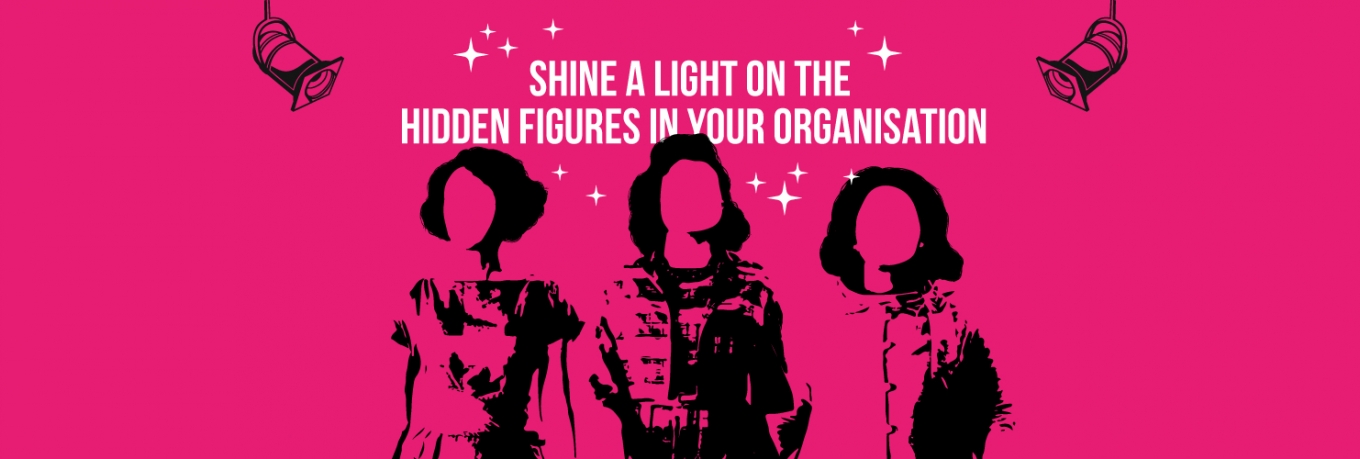Imagine the pride you’d feel if you helped put the first American in space.
Now imagine that such an incredible accomplishment goes unrecognised – and is only publicly acknowledged some 50 years later.
That’s the premise of the best-selling book and Oscar-nominated film Hidden Figures. It tells the story of three African-American women – Katherine Johnson, Dorothy Vaughan and Mary Jackson – who overcome formidable obstacles to play a key role in the American space programme.
Katherine, Dorothy and Mary carve out their niche in history through determination and resilience, whilst receiving little encouragement from their managers or peers.
And while most of us aren’t working on the space programme, there are elements of their story in every organisation. We all have ‘hidden figures’, colleagues who receive little or no recognition for their daily efforts. Without them, our organisations can quickly grind to a halt.
How do we shine a light on these forgotten stars? And what’s our role as internal communicators?
Why recognition matters
Recognition doesn’t come naturally to many managers. Some still believe that getting paid should be recognition enough.
But in a series of novel experiments, behavioural scientist Dan Ariely discovered the opposite. Ariely recruited groups of students to assemble Lego figures for money, and studied the impact of meaning and recognition on their motivation to work.
He found that people are willing to perform the most menial of tasks, even for little pay, as long as they consider the work meaningful, or are recognised for their contributions. “Even the smallest acknowledgement,” Ariely said, “increased willingness to work.”
The ‘hidden figures’ of NASA prevailed because they derived a strong sense of purpose from their work, and because they were resilient enough to overcome their obstacles. But many of us don’t have such a clear sense of purpose – and that’s why regular recognition is so important.
Other research backs this up. Gallup, for example, found that employees who had received recognition or praise within the previous week were 10-20% more productive.
The positive to negative ratio
So how much recognition is enough? Well, more than we might think…
Although the exact number is now debated, Marcial Losada’s research into workplace culture suggests we need around a three-to-one ratio of positive to negative comments to maintain a high-performing work environment.
Yet many managers only speak up when they see employees doing something wrong. The solution, according to leadership author Ken Blanchard, is to ‘catch them doing something right’.
By providing specific, positive feedback on good performance, managers not only increase the motivation of their team members, they also encourage them to repeat that behaviour.
So what role can internal communicators play in making this happen? Here are some tactics to consider.
Provide tools to make recognition really simple
Everyone’s short of time, so one way to increase recognition is to introduce tools that make it easy to do. Technology can be a great friend here, either through a bespoke recognition platform or by using social media tools like Yammer.
Virgin Media was an early pioneer of online recognition with its innovative peer-to-peer Shout scheme, making it simple for any employee to acknowledge the great work of colleagues, or just to say thank you.
And technology isn’t the only answer. With a large population of offline employees, Sodexo introduced ‘On the Spot’ cards to encourage managers to leave employees handwritten notes to acknowledge good work.
Support your line managers
Line managers are key to recognition, and internal communicators can support them by integrating recognition into communication channels. At Sodexo, for example, a new ‘team huddle’ template reminded managers to recognise team members at every meeting.
You can help develop managers’ skills too. Recognition is just another form of communication, so why not integrate it into their communications training? Share these 10 tips for effective recognition. Or coach managers and leaders to use recognition more effectively.
Get your leaders listening
Former Asda CEO and Royal Mail Chairman Allan Leighton made a habit of turning up unannounced at operational sites to chat to frontline colleagues. His favourite question was: “If there are a couple of things I could magic for you, what would they be?”
Leighton’s visits were designed to find out what the real issues were on the ground. But listening and taking an interest in colleagues’ concerns has another purpose: it validates their expertise and judgement. It’s a powerful form of recognition.
As a trusted adviser to your senior leaders, you can encourage them to take a similar approach. Engineer opportunities for them to visit sites, ask questions, and actively listen and respond to colleagues’ views.
Seek out your hidden figures
One great benefit of being a communicator is the licence it gives us to delve into the darkest corners of our organisations. So take advantage!
Think about the teams that rarely feature in your communication channels. Which do you know least about?
Once you’ve done that, go and find out more about them. Seek out the stories. Have a chat over coffee about what they do – you’ll find almost everyone has an interesting story to tell if you ask the right questions. Then feature them in your channels.
Over time, even those ‘hidden figures’ will start to see some light.
By Dave Wraith for Alive!
















